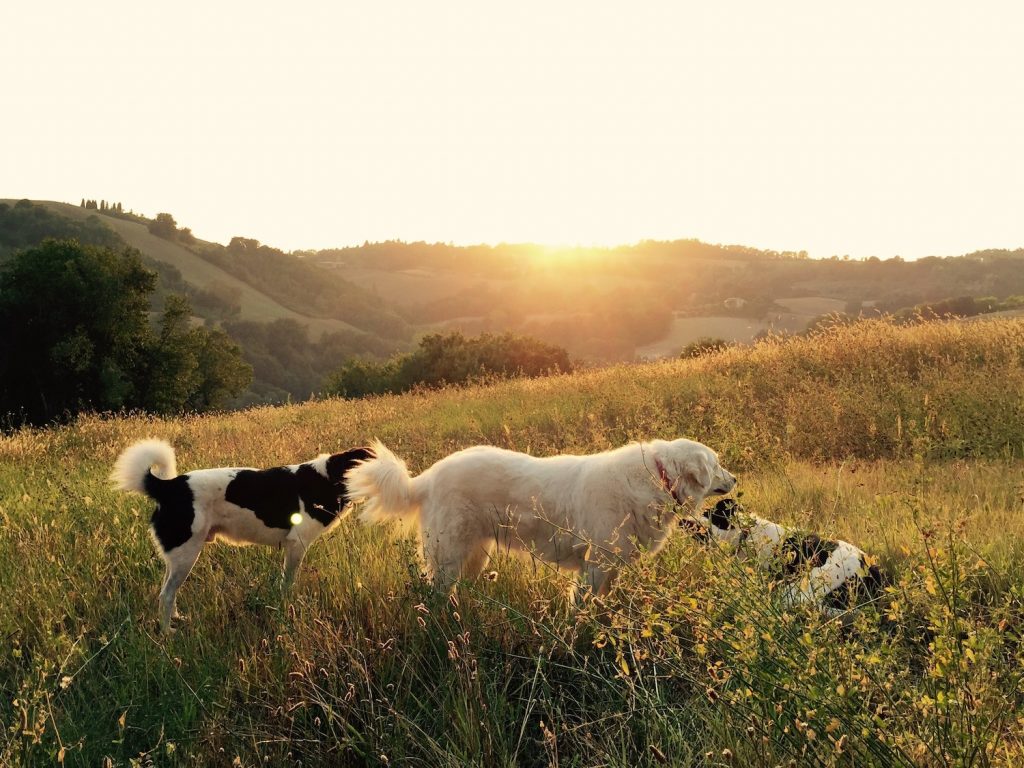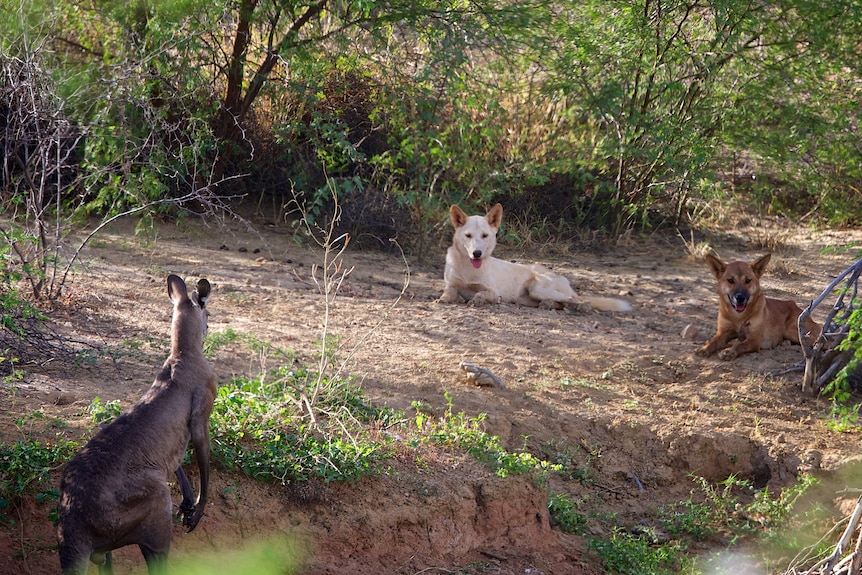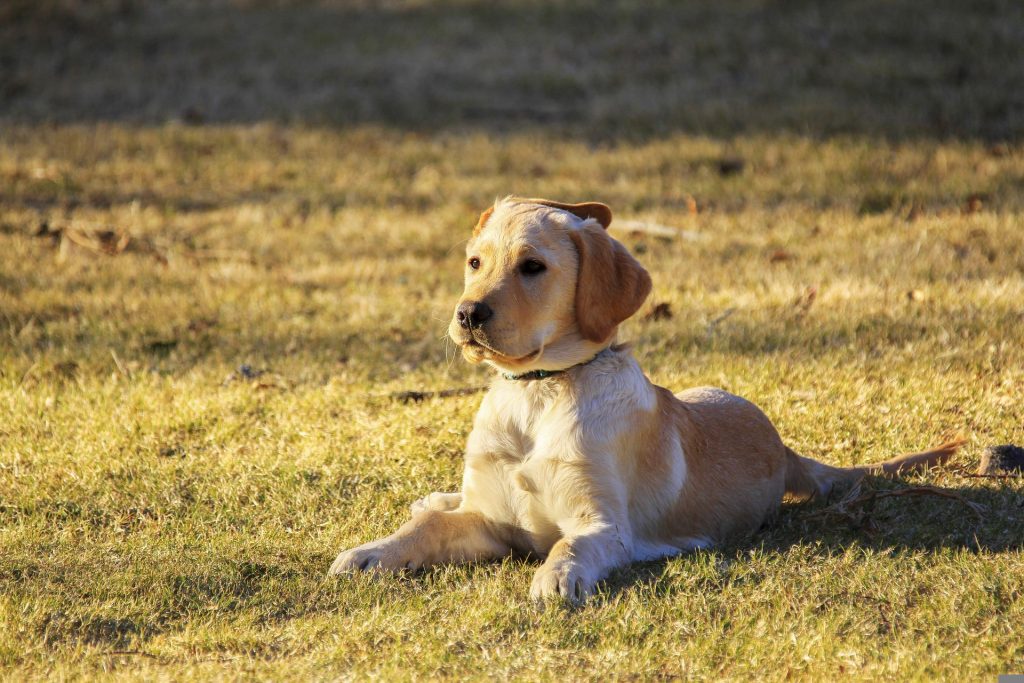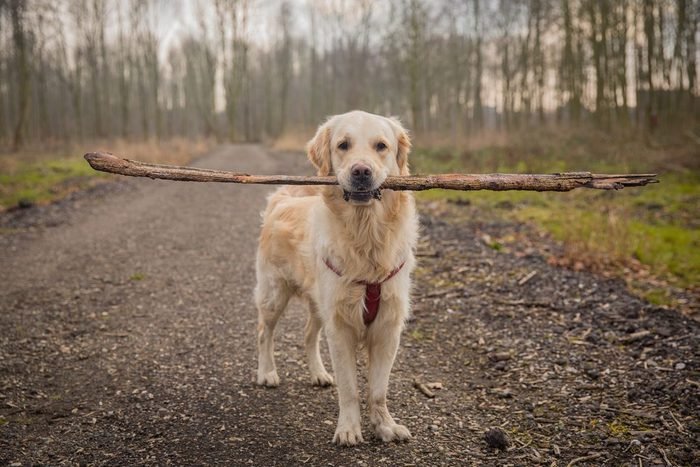
They are beautiful pets. Sad to say that, like humans, dogs can end up dying. The death of a dog is often caused by many circumstances like illnesses and injuries, old age, or being without water for prolonged periods to mention just some. If they die it is crucial to be aware of what to do.
What is the time frame for a dog buried in the ground to decay? It can take anywhere from six months to 18 years in order for a dog who is buried to completely decompose. If the dog is exposed and not placed in a burial, it will decay faster. The rate of decomposition is dependent on the depth at which you placed him to be buried in the ground, the temperature, and if the body is covered or exposed.
In order to help you make the best and most well-informed decision regarding the dog’s burial procedure, we’ve given important information and answers to all your questions about the proper handling of a dead dog, and what happens during the process of a decomposing dog dying.
What is the time it will take for a dog buried to be decomposed?
Based on various variables the dog that is buried decomposes completely (dry bones phase) in a period from 6 to 18 months.
The process of decomposition that takes place underground is influenced by a variety of aspects. For instance:
- A depth at where the carcass is dug.
- Burial technique. For instance, lay the body in the grave, then sprinkle soil directly on it. Cover it with cloth or blanket, then place it inside a coffin or put it in a plastic bag.
- The climate. It’s also a crucial factor to think about. If your region is very hot, your carcass will likely decay faster in comparison to colder areas.
- The age of the dog is. The younger the dog, the quicker it breaks down compared to adult and older dogs.
- Breed. The larger the body size, the longer it takes to completely decompose, unlike ones with smaller size bodies.
What is the time it will take for a dog to break down in the air?

It can take anywhere from 3 to 6 months for a deceased dog to completely decompose in the event that it is placed on the ground.
If you’re an animal lover and you join me in this.
You consider your dog as family. And you’re more than eager to do what is necessary to keep them happy and well. If nature is calling to you, there’s not much that you could do to avoid the worst from occurring.
A dog lying dead on the ground and decomposing out in the open isn’t common. If that is the case it could be because of one of two reasons.
The dog was not in an abode for the duration of its stay or anyone that was responsible for it while they were alive.
Another possibility is that the dog was out walking on its own, and then got into an accident, and didn’t make it home or received the medical attention he required. This is why the dog may be taken to the nearest tree, and the dog’s owner doesn’t get to find out where it is.
Then it’s like you smell something bad in your neighborhood or while driving.
It is now the right time to get started on how long you’re going to be able to cope with the stench that you’re not sure what to do about it.
Beginning from the 3 through the 14 days, the weather is going to be difficult! The problem will get worse in the sun! The smell will be quite intense.
The flies will also be to be everywhere. Beginning from the carcass and ending just a few meters away!
But, do not worry, nature will resolve its own issues. The problem could be resolved perhaps before the 14 days are over.
Scavengers may be able to pick at the flesh, flies, maggots, or even rain. The problem will then be solved in its own time.
After all the flesh has been dissolving, bones that are dry don’t smell.
What is the time it will take for a dog’s body to decompose underground?
In contrast to a dead dog that is exposed to the elements underground, decomposition underground takes more time. Depending on the circumstances that determine how long it takes for the carcass to undergo decomposition can take anywhere from 6 to 18 months.
These are the factors that can allow the carcass to decompose in the period of 6 months to one year:
- It is placed up to three feet below the earth.
- It was dumped on the ground with no blanket cover or carton box or anything else.
- The normal temperature of the climatic.
If the burial is deeper, cover with blankets inside a carton coffin, box, or in bags made of plastic. It takes between 2-18 years for the material to completely decay.

What time does it take for a dog buried to break down in a box sealed with a seal?
The period of 6 months and two years is enough time for a dog that has died and buried in a container to completely break down.
In comparison to a simple burial, burial in a box can take a bit longer. However, the difference isn’t significant if a container breaks easily.
How Does Your Dog Break Down
Did you be aware that decomposition begins as soon as the dog goes off?
Now you are aware. When blood circulation ceases around the body of the dog, this is the time when the decomposition process begins.
The first stage isn’t obvious, and neither do any smells come out. The smell is likely to be felt between 10 and 7 hours after the death.
The Decomposition stages comprise:
- Fresh
- Bloat
- Active decay
- Advanced decay
- Dry bones
Let’s look at each of these steps in detail.
5 stages of decomposition in dogs
The only way you’ll be able to see all 5 stages fall down is when the carcass has been placed above the surface.
#1. Fresh
When the blood ceases to pump the blood begins to get cold, which marks the beginning of decomposition. Within 3 to 6 hours following death, blood begins to drain toward the location of pressure (where it’s sitting on). It could be the abdomen, back or the head.
The flies are likely to be to be the first ones to show up and feed on meat and blood. They can be able to produce eggs that could pose a risk for other animals in the vicinity in the event that the body of the dead is not properly cared for.
#2. Bloat
Bloating appears to be swelling. It’s possible that the body of the deceased dog grows in size. The reason for this is that the gases within the carcass are able to build up and trigger the fluids to push out of the dead animal.
Now, the smell is at its highest. When the carcass sits higher than the ground, everything that can feed on the carcass is likely to be enticed to the carcass by its smell.
#3. Active Decay
At this point the smell of decay is beginning to disappear slowly. Its size has decreased. Because blood has gone the flesh is all that is left. There are only maggots and flies that feed on any remaining bit of flesh.
#4. Advanced Decay
The majority of the process of decomposition has occurred. The bone and fur are the only remaining things. Maggots and flies are gone by the time the stage is over. If the carcass was laid upon the ground, the carcass is dry by now.
#5. Dry Remains
This is the moment when you can conclude the process of decomposition. The only remaining things are the dry bones cartilage, dry skin.
It is important to note that if the carcass has been buried in the ground, there won’t be insects or scavengers, which means the process of decomposition is prolonged. Maggots are the ones who take over the breaking down of flesh process.
How long should you be waiting to burrow the dog?

After death, waiting between 2 and 3 hours is sufficient if you feel and touch the body’s temperature already at a minimum. This is a sign that the process of decomposition has been completed.
If you leave it longer than 3 hours, insects will begin to settle on the dog’s carcass. Then, a couple of hours afterward (10 up to 12 hours) the body will begin to develop a stinky odor when the weather is hot or humid.
If you wish to prevent this, you should start the burial process earlier instead of later.
What is the time it will take for dead dogs to be able to smell?
It’s based on many variables. Let’s look at temperature. If it’s cold or snowing where you live, and the dog that died is outside, its carcass isn’t likely to smell. If you live in the warmer environment, the smell can begin to be noticeable from 10 and 12 hours after the death.
If you are in normal conditions at normal temperatures, the horrible stink will spread across the area within 24-48 hours.
The idea of keeping a carcass in your home is probably the worst option ever! You’re inviting all sorts of insects and flies which could spread deadly diseases.
The best way to keep your deceased dog at home, is to accept cremation.
How deep can you dig to bury a dog?
The most common depth for a dog grave is 2 feet deep. However, if the area you choose is sand-free and 90+. The depth can be increased to 3 feet.
The reason why you’re making the time to put down the animal is to avoid the horrible smell the remains will emit in the course of your day. Plus ensure a proper decomposition process.
Then comes the necessity to do it correctly:
- To stop it from getting removed by animals.
- Beware of breaking underground pipes.
- Choose the appropriate material to protect the grave. It is essential to ensure that the grave isn’t disturbed.
- Fill in the upper 5-8 inches of the surface with small stones. If you’d like make an concrete slab over the top.
What is the most suitable spot to put a dog’s remains?

When deciding on the ideal place to put your pet down it is essential to take your time when choosing a location that you can be sure won’t be disturbed in the near future.
It is essential to make sure that the area is away from any wires or pipes. Also, it should be at a secure distance away from water sources.
Additionally, it must be an adequate distance from the flower bed as flowers have to be looked after frequently.
Do dogs that have been buried have a smell?
A burial dog smells however unlike a dead animal lying on the ground, a dog buried isn’t a stench everywhere. Additionally, the remains are not snatched up by birds, flies, and other animals.
What animal could be able to dig up the remains of dead dogs?
The most popular animals that find dead dogs include the wolf, bear, fox as well as badger.
It’s not just heartbreaking but it can also be extremely traumatic seeing the pet you’ve laid to rest being dragged up into the ground by a pet and their remains scattered throughout the area.
The grave may be unlocked, and the dog you laid to rest has been taken from the grave or taken.
When you choose to burrow your dog, it’s important to take all necessary precautions. So that the procedure is a success.
The most crucial steps are:
- Dig the grave in a deep enough way that it’s not easy to dip into. A depth of two to three feet is the recommended depth.
- Cover the grave with care. It is best to cover it with slabs or stones.
Tips to bury your pet

In the position of deciding whether you want to put your pet in a grave or not, here are some suggestions to assist you in making an informed choice.
#1. Cremation
Are you an environmentalist? If yes, then you are an environmental keeper. We’re all in identical boats. Let’s continue sailing.
Burying your deceased pet in the garden is not just difficult, but is also filled with many steps to take. This is the simplest solution: Cremation. It also gives you the opportunity to get closer to your dog.
CremationYou will not have to be concerned about any aspect. All you have to do is remain calm and allow the carcass to turn to the ashes.
The process isn’t harmful to the environment. There will be no regrets when you decide to relocate to a new residence. All you need to do is to take your possessions and take your cremated urn with you.
#2. Safety
Before you make any decision it is essential to implement all safety measures prior to of everything else.
Before you begin digging deep into the earth. It is recommended to first notify the local authority.
After being granted permission and you are able to proceed with your plans, without worry about getting in trouble, or worse harming yourself. In the case of an accident, for instance, you get caught on an electrical wire. Gas pipe, for instance. several.
#3. Depth
Perhaps your faith or tradition does not permit cremation. Do not worry because, as I stated earlier I’m here to assist anyone who comes across our site to help you find the right solution to the problem you’re looking for.
Once you’ve chosen the ideal spot to put the remains of your pet, ensure that you dig in a deep enough. at least two feet deep. It’s recommended to increase it to three feet, if it’s possible, in the case of dogs that are large, like bulldogs.
Don’t forget to cover the grave in a proper manner. It is best to cover it using a slab or stones. It reduces the disturbance to the grave.
#4. Location
Are you wondering where the best place is relevant to place your pet’s remains?
It’s vital to keep track of an area in your home or apartment that is dry and has a high in any. The choice of a spot that is prone to rain or in a swampy area could cause water contamination.
If the grave is wet, the chance of contamination by underground water is quite high. It could also be a source of pollution for the surrounding environment.
5 Reasons why you shouldn’t bury dogs in your backyard isn’t a good idea

A dog’s grave in the backyard may seem as a simple and fastest method to quickly and efficiently bury the body.
Did you know there are most risky ways to dispose of an animal carcass is to dig the soil and then dump it in the ground? They don’t realize that it’s not a good idea. Here’s why:
#1. The Carcass being dug up
It’ll be to your delight, when you wake up in the morning to discover your dog’s remains, which that you’ve buried in the yard, scattered all over in your yard.
Animals such as foxes excel in this regard. Particularly if you didn’t put the carcass in a deep enough manner at least two feet deep and covered the grave with a suitable cover.
If your pet suffered from medical conditions that caused death, you’ll be able to guess what’s in store for you, particularly in cases where the disease was infectious!
#2. Flooding
Underground contamination is often the most hazardous contamination to ever occur because it affects a vast region. The reason for the contamination may take longer to detect.
Many pets could easily become infected. The problem can get even more severe if humans contract an infection.
To keep each other’s trust Please make sure we take the proper steps to live a healthy life.
We should avoid burying carcasses in areas where flooding water is often a factor.
#3. Law
Before you decide to put your pet to rest at the back of your yard. It’s best to be aware that in the US, some states do not permit burial at home.
Some states allow the use of a computer, but you require approval from the authorities and you must comply with all rules and regulations that are put in the place.
#4. Leave Your Pet Behind
There are situations when you’re required to move. If you’ve already buried your pet at the back of the property. You’ll have to deal with the dilemma of letting your pet go and not leaving behind them. This is difficult to deal with.
#5. Resurfacing
When you see the body of the dog that you dug up in the surface and is carried away by heavy rainwater could be an absolute nightmare.
It’s quite possible, particularly in the case of graves that are small, for example, just below two feet in depth.
It can also cause contamination of water and spread infection.
5 alternatives to burying your dog in the yard

Who doesn’t love it when you are given one alternate to solve the circumstance? I like having options to solve the problem. It allows me to decide. This helps to ease the burden by a small amount.
Let’s look at the options of burying your pet’s remains in the yard.
- Outdoor Urn (rock). It’s fine to choose cremation but do not want to keep the remains inside your home. There’s a way to buy the outdoor memorial (rock) that you can keep in your backyard.
- Biodegradable urn. There is the option of having your pet’s ashes cremated. Also, the possibility to have a burial ceremony without polluting the surroundings is simply adorable. What makes the concept even more appealing is the possibility of scattering the ashes in the most memorable location that you share with your dog.
- Donation of pets. Would you like your pet to be a part of the history of our time? Then, you’ve got the most effective option of giving it away to a research facility. This will give the ideal opportunity for those who want to learn in the field of veterinary medicine to increase their knowledge.
- Pet Cemetery. Locating the ideal spot in your home or apartment for a burial place can be difficult. The only choice you have left is to go with the pet cemetery so that you can pay your final respects to your beloved pet.
- Hydrolysis by alkaline. Using heat, water, and alkaline chemical to decompose the body faster than letting nature do its time. The cremains of bone fragments are then given to the dog’s owner.
Information about US law regarding dog burial
The law on pet burial is different from the state. It is recommended to seek out the official to ensure that you are in compliance with the law prior to making any decision.
The most commonly used laws for the dog’s burial comprise:
- The pet that has died must to be buried within 24 hours from the date of the death.
- The burial of pets in the backyard must be approved by the authorities. In accordance with all regulations and rules established.
- Pet burials in the cemetery are permitted. Although it may take more than 48 hours.
Information about UK Legislation (as of 2013)
Did you have any idea if it is illegal in the UK it is a crime to put a dog’s remains in an unoccupied property?
If you don’t have the property, you’re able to place your pet’s remains in a designated pet cemetery. In addition, the grave’s depth must be at least two feet deep in the case of heavy soil and three feet for soil that is light.
There is no disposal of carcasses at any point near water sources, and there is no burial of animals with contagious diseases.
Last Thoughts
At this moment, I think you have nearly, if not all of the essential information about how long you should wait before burying a dog, and the best way to carry out a secure burial. It is a good option to read the article step-by-step. I am sure you will be able to come up with some new ideas.